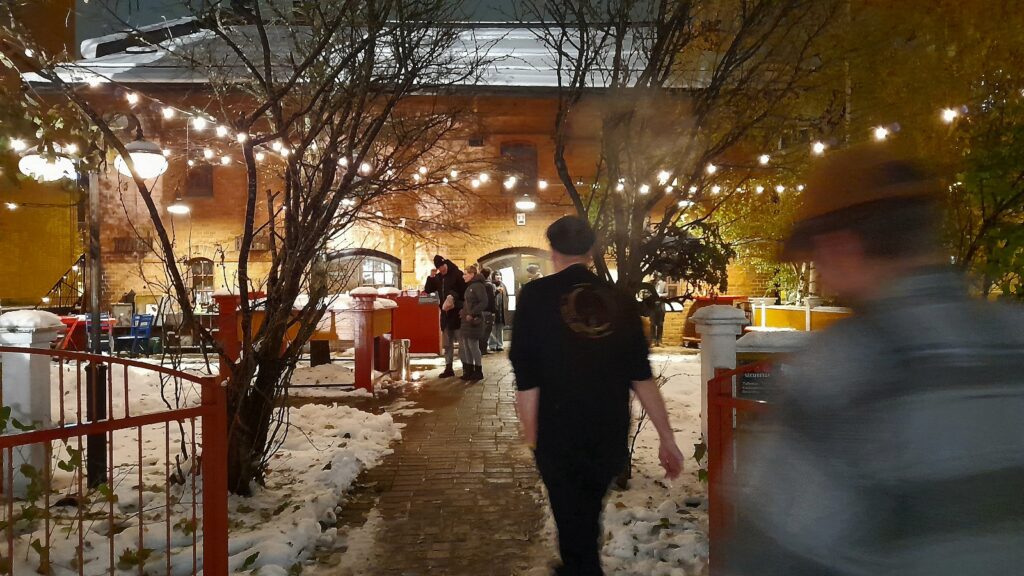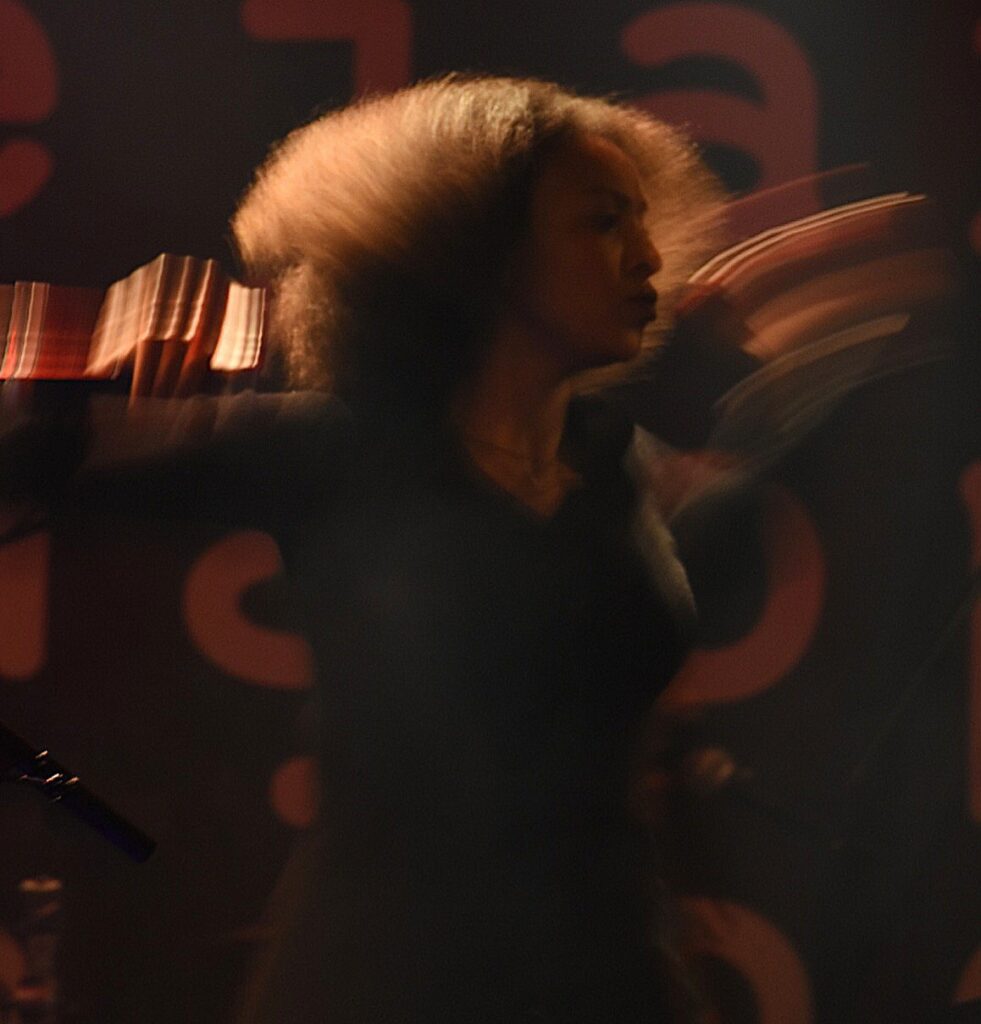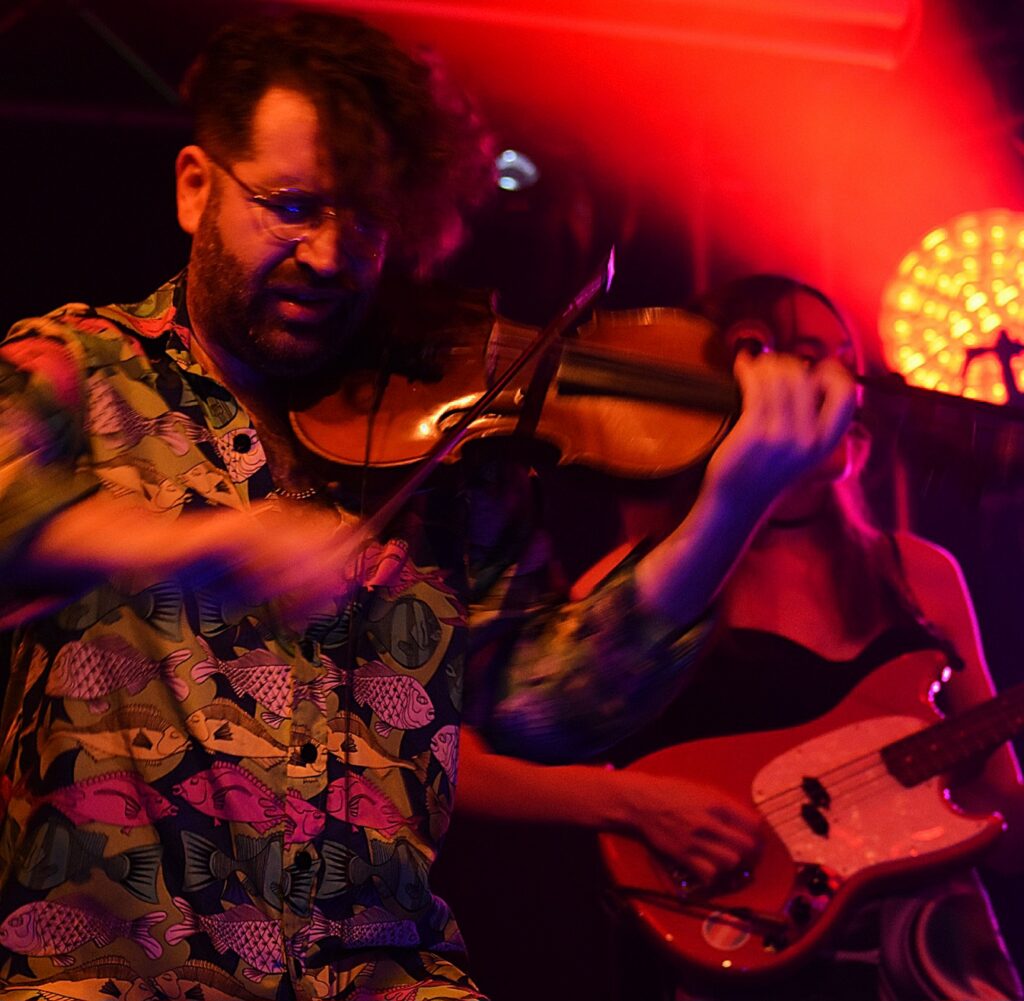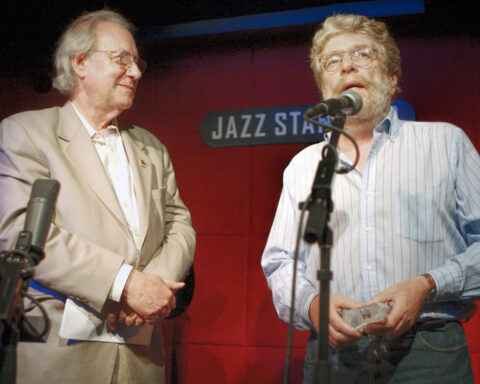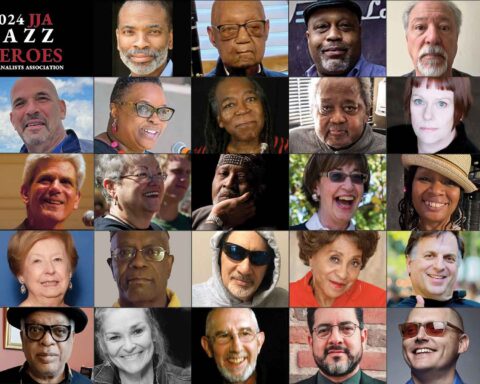In the southwest of Finland, the city of Tampere — previously an industrial center — has evolved into a cultural mecca, with 12 percent of its population being students (40,000), a newly built arena that hosts
sports events and spectacles, and a current celebration of 100 years of radio broadcasting (its programs were among the first to be beamed in Europe, prior to those from Helsinki). Amid this, the Tampere Jazz Happening, 23 concerts that took place on the All Saints’ Day weekend (November 2 – 5), more than justified its name.
As Juhamatti Kauppinen, the artistic director, likes to emphasize, it is a “happening,” aiming to provide good music in the widest meaning of the term jazz to the local community. He is specially proud of the trust he gains from audience feedback. Again this year. an audience of all ages and social backgrounds filled up two venues, Pakkahoune and Telakka, each offering three concerts
in a row daily, without any pop stars booked to 96% capacity, with 4200 tickets sold. And those listeners were rapt, listening attentively, never interrupting performances with sociable chatter, only sometimes applause.
No wonder: the Finnish scene, vivid and diversified, revolves around festivals (including Pori, Porvoo and We Jazz in Helsinki); labels such as We Jazz Records or Eclipse Music; clubs (especially in Helsinki and its surroundings, and education. Finland has become known throughout Europe for high quality free education at all levels, and most of the nation’s jazz musicians have attended Sibelius Conservatory to acquire knowledge and skills education authorities say allow them to find their own ways in the music industry around the world. Many of young musicians start by producing their first album themselves, state-supported JazzFinland being the hub for most of jazz community activities.
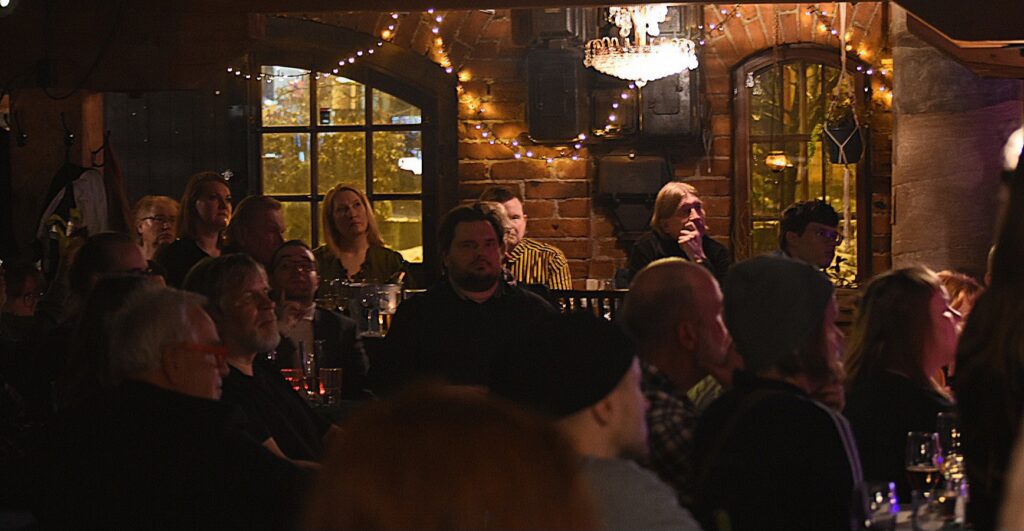
The Finnish scene comprises music that’s eclectic, strongly rooted in folk traditions (like that of the ensemble Uusi Aika), as well as modern and traditional jazz, rock, hip hop and other contemporary stylings. It is innovative when it comes to sound exploration and the use of electronics.
Theatre Telakka, a rustic wooden-floor and brick-walled small venue for the Happening, packed full with a steady core of audience, featured such Finnish musicians. As its program overlapped with that at Pakkahoune, just a few minutes away on the same square, it was difficult to acquire a comprehensive insight of the performances. But the main quality of all performances was the commitment to the unity of formations of duos, trios and larger ensembles, and to distinctive expression (samples in the official link are worth hearing ). The jazz community does not most bother about distinguishing Finnish jazz identity from other Scandinavian performers (for example, Swedish or Norwegian ones).
Klubi (club) was the late night, spirit-lifting venue presenting groups consisting of players with strong rhythms and aggressive wind sections from the London Afrobeat Collective and the trio Kutu. Kira Hummen (vocals, cello, bass, guitar) and her band from Berlin opened the festival presenting a cabaret sound and engaging verses, attracting young llsteners to queue up in front of Klubi.
Following, saxophonist and composer Fabian Dudek‘s quartet was a pleasant surprise, presenting emotionally tense compositions such as “Day by Day“ and “An Empty Room, Then Smiling,“ commissioned for and presented at Cologne Jazzweek earlier this year. Dudek’s alto sax sound and phrasing integrates the American composer-performer Henry Threadgill’s structures and trumpeter-improviser Ambrose Akinmusire’s technique, as heard in compositions from Isolated Flowers. Some other venue would provide better sound conditions and therefore offer a different context for his music.
The official festival opening, in the biggest venue Pakkahoune, was assigned to the Finnish Jazz Federation’s Yrjö Award winner, young saxophonist Linda Fredriksson, described as “a bold improviser and a distinctive musician who transcends boundaries”, and beloved by the audience.
Aforementioned Akinmusire’s influence has been much discussed in Europe lately; he’s frequently mentioned in comparison to others, one of them being with Finnish trumpet player Verneri Pohjola, who also has his own acknowledged musical family background. Pohjola with Kit Downs (piano), Jasper Høibi (double bass), Olavi Louhivuori (drums) and Tuomo Prättäla (keyboards) highlighted November 3, presenting their album released the same day titled Monkey Mind (Edition Records). Its title refers to states of mental restlessness. Two compositions were sepecially strong: lyrical “Of Our Children” and dynamic “Party In the Attic”. They performed “Save This One For When You Need It” with Linda Fredriksson, too.
Stylistic fusions, electronics, the presence of hip-hop, focus on reeds and African heritage were common denominators of the overall well-selected program. Violist and violinist Théo Ceccaldi proved to be a most versatile artist, providing music that amused and yet conversed profoundly with the Ethiopian musical heritage represented by colorful, expressive vocalist Hewan Gebrewold, Geuthier Toux (keys), Akemi Fuijmori (bass) and Cyril Atef (drums), enjoyed by those with demanding taste. Ceccaldi was also part of the trio Velvet Revolution with Daniel Erdmann (sax) and Jim Hart (vibraphone).
The spotlight on Germany resulted mostly from Finnish connections with their labels and the multi-cultural Berlin scene, which hosted Finnish musicians including Kalle Kalima and Valtteri Pöyhönen. The real Berlin sound and uncompromising attitude was presented and colored by the timbres of the voice of Jelena Kuljic, guitarists Kalle Kalima (performing in his homeland after more than decade away from it) and Frank Möbus, and drummer Christian Lillinger — KUU! (Finnish word for the moon), an extraordinary talented quartet combining distortion, punk, jazz and psychedelic elements.
Pianist Julia Hülsmann’s quartet with Mark Muellbauer (bass), Heinrich Köbberling (drums) and tenor saxophonist Uli Kempendorff brought exquisite, purest jazz experiences to the most demanding listeners, presenting mostly, slow tempi original compositions with dynamic front melodic lines, rich background harmonies and classical music influences, from their album The Next Door (on ECM, 2022).
Multi-instrumentalist and composer Goran Kajfeš, Jonas Kullhammar (sax and flute), Per ”Ruskträsk” Johansson (sax and flute), Robert Östlund (guitar), Jesper Nordenström (keys), Johan Berthling (bass) and Lars Skoglund (drums ) — the Subtropic Arkestra — set the audience on fire with attractive and

yet complex pieces from various volumes of their album trilogy The Reason Why. Their sound is described as a hybrid of “Brazilian bossa nova, Turkish pop, Swedish progressive rock, English jazz and German electronic music”.
Among other cross-cultural evocations: Ukrainian harpist Alina Bzhezhinska revisited the heritage of Alice Coltrane, Joe Henderson, Pharoah Sanders within her HipHarp Collective. London-based alto-saxophonist Camilla George‘s quintet integrated rap featuring Sanity. George is considered to be among Britain’s rising talents; her jazz sensibility is enriched by her Nigerian background, as heard on Ibio-Ibio her latest album (Ever Records 2022), along the lines of Kenny Garrett’s Sounds of the Ancestors.
Though not emphasized in marketing or prominence, Americans played a significant role in the Happening’s programming. Good Vibes‘ Chicago-born/New York-resident vibraphonist Joel Ross, with drummer Jeremy Dutton, pianist Jeremy Corren and bassist Kanoa Mendenhall, treated us to a technically demanding and provocatively pulsating, long joyful medley, attesting to Ross’s percussive inclinations.
The quartet of saxophonist Marcus Strickland, drummer Charles Haynes, keyboardist Mitch Henry and bassist Kyle Miles explored exciting soundscapes of the present and future Earth, with music from their 2023 release The Universe’s Wildest Dream. Young people especially enjoyed singer Jose James’s tribute to Erykah Badu’s songs.
The official end of the festival was assigned to Nduduzo Makhathini‘s trio, featuring Zwelakhe Duma Bell Le Pere on double bass and Ayanda Sikade on drums. They took us to a spiritual exploration of sounds from African, and played an encore — rare for this festival.
Yet the Germans closed the circle. The trio of the trombonist (and executive director of Cologne Jazzweek) Janning Trumann X NOSACRUM (with Florian Zwissier on synthesizer and Oli Steidel, drums) played a farewell set at Telakka of improvisation as a dynamic interplay of electronics and acoustic sounds, from drone-melting unisons to repetitive or fragmented phrases. It was broadcasted live on Yle (Finnish Broadcasting Company) Radio 1.
The Tampere Jazz Happening is mostly supported by city, regional, state and European funds, with sponsorship and ticket sales covering 40 percent of its budget. Local institutions took part, as Library Metso promoted books and records, organizing the wheel of fortune whose winner received listening and reading recommendations, available on-site.
Refreshed with local food and sauna in a small rented vacation house easily reachable from the city, and by sports and recreation activities by one of 20 lakes in woods surrounding Tampere, one is ready for the challenges of a demanding festival schedule. The innovative, fresh and liberated creativity presented at this festival made it special and thrilling. The warm hospitality of the whole TJH team and its unique Finnish jazz touch made next year’s 43rd edition most promising.
* All photos accompanying this posting ©Danica Pantovic


